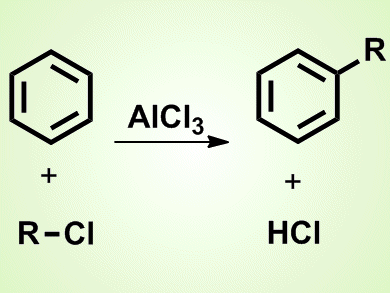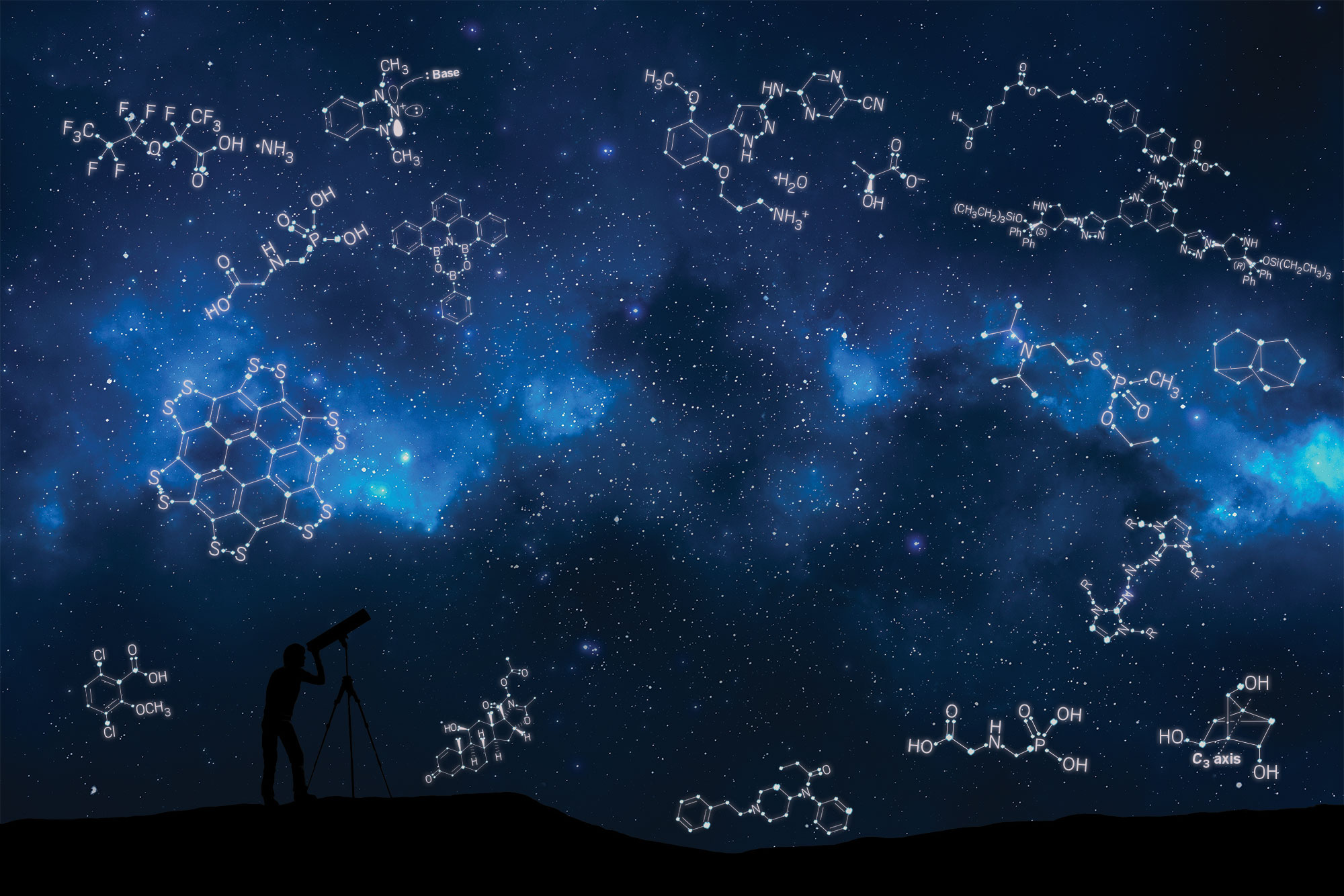Exploring the Legacy of Charles Friedel: A Pioneer in Organic Chemistry
Introduction to Charles Friedel
Charles Friedel, a name that resonates throughout the scientific community of the 19th century, stands as a pillar in the realm of organic chemistry. Born on March 12, 1832, in Strasbourg, France, Charles Friedel's contributions to science have left an indelible mark that continues to influence modern chemistry. As the son of a university professor, Friedel was introduced to the academic world early in life, laying the foundation for his future pursuits in scientific discovery.
Throughout his career, Friedel navigated a rapidly evolving scientific landscape. His work, particularly in organic chemistry and crystallography, was instrumental in shaping the direction of chemical research at a time when the field was burgeoning with new theories and discoveries. This article seeks to delve into the life and legacy of Charles Friedel, examining his contributions and the enduring impact of his work on modern science.
The Formative Years of Friedel’s Life
Friedel’s early life set the stage for his future achievements. Growing up in a family deeply rooted in academia, he was afforded the opportunity to immerse himself in scientific inquiry from a young age. This environment fostered his curiosity and enthusiasm for learning, driving him to pursue studies in various scientific disciplines.
After completing his early education in Strasbourg, Friedel went on to attend the prestigious École Normale Supérieure in Paris. Here, he honed his skills and fortified his knowledge under some of the most esteemed scholars of the time, including the notable chemist Louis Pasteur. It was at École Normale Supérieure that Friedel's interest in chemistry truly blossomed, steering him towards a path that would soon transform the scientific landscape.
Friedel’s Entry into Organic Chemistry
Friedel's foray into organic chemistry was marked by a series of pioneering experiments and discoveries. Among the most notable was his collaboration with American chemist James Mason Crafts, which led to the development of the Friedel-Crafts reaction – a cornerstone in the synthesis of aromatic compounds. This groundbreaking work, first introduced in 1877, provided a method for attaching carbon chains to aromatic rings, enabling the creation of complex hydrocarbons and revolutionizing organic synthetic chemistry.
The Friedel-Crafts reaction represents one of the earliest examples of a method that facilitates the direct introduction of alkyl or acyl groups into an aromatic system. Its development opened the doors to the synthesis of numerous natural and industrially significant compounds, laying the groundwork for advancements in pharmaceuticals, agrochemicals, and dye manufacture.
Contributions to Crystallography
In addition to his strides in organic chemistry, Friedel made significant contributions to the field of crystallography. His meticulous research and application of this science shed light on the intricate structures of crystals, offering valuable insights into their geometries and symmetries. His work in crystallography not only expanded the understanding of crystal lattices but also provided essential tools for subsequent research in mineralogy and solid-state physics.
Friedel's experiments in crystallography emphasized the importance of form and symmetry in devising a coherent structure for crystals – a concept crucial to many scientific disciplines today. His insights laid a vital foundation for the later development of X-ray crystallography, a technique that has become indispensable in the study of molecular and atomic structures.
Friedel’s Influence on His Peers and Successors
The impact of Charles Friedel on his contemporaries was profound, as he inspired many budding chemists with his innovative approaches and discoveries. He cultivated a milieu of excellence in research by fostering a collaborative environment in which ideas could flourish. His work not only propelled the careers of those who had the privilege of working alongside him but also shaped the direction of future scientific inquiry.
Friedel's influence extended beyond his direct collaborations; his approaches and methodologies have informed countless subsequent studies, forming the underpinnings of research methodologies that are still employed in laboratories worldwide. Many of his innovative techniques continue to be invaluable to chemists, reinforcing his legacy as a pioneer in both organic chemistry and crystallography.
Conclusion
Charles Friedel's life and work demonstrate the remarkable power of curiosity, intellectual rigor, and collaboration in the pursuit of scientific progress. His contributions to organic chemistry and crystallography have created pathways that continue to illuminate the field of chemistry, inspiring future generations to build upon his groundwork and explore new scientific frontiers. As we continue to unravel the complexities of the natural world, the legacy of Charles Friedel serves as a testament to the enduring impact one individual can have on the vast and ever-expanding domain of scientific knowledge.
The Foundations of the Friedel-Crafts Reaction
The Friedel-Crafts reaction wasn't just an isolated discovery but rather a culmination of meticulous research and experimentation. To fully appreciate the significance of the Friedel-Crafts reaction, it's essential to understand the chemistry landscape of the late 19th century. At this time, organic chemistry was advancing rapidly, with scientists striving to develop more efficient synthetic pathways to create larger and more complex molecules.
Friedel and Crafts' collaboration provided the tools for modifying aromatic compounds by introducing alkyl or acyl groups, effectively bridging a gap in synthetic chemistry. This fundamental reaction harnesses the catalytic power of Lewis acids—such as aluminum chloride—to facilitate the electrophilic substitution on aromatic rings. By enabling the attachment of more versatile carbon side chains to benzene cores, resultant compounds could be integrated into various areas of industry and academia, revolutionizing chemical manufacturing.
Looking back, it's evident that the development of the Friedel-Crafts reaction played a pivotal role in the synthesis of compounds which became integral to everyday products, like plastics, resins, and pharmaceuticals. The reaction also streamlined the way materials could be modified, with implications reaching far into chemical industries and research labs alike.
Friedel's Dedication to Collaborative Science
Throughout his career, Friedel maintained an unwavering commitment to the advancement of collaborative science. This dedication was already clear in his partnership with Crafts, as both chemists diligently worked together to refine and evolve their research findings. Their mutual respect and shared vision exemplified the essence of scientific collaboration, setting the stage for future cooperative efforts in research.
Beyond his partnership with Crafts, Friedel's influence cultivated a research environment that encouraged open communication and collaboration. At institutions such as the Sorbonne, where he served as a professor of chemistry, he shaped a generation of students and scientists, teaching them to value interdisciplinary collaboration as a means to surpass the scientific challenges of their time. His commitment to fostering a spirit of cooperation among his peers helped to amplify his discoveries' reach, ensuring that their full potential was realized by a wider scientific community.
Technological Innovations Inspired by Friedel’s Work
Friedel's contributions to chemistry, particularly through the Friedel-Crafts reaction, set in motion a series of technological advancements that have redefined numerous industries. The petrochemical sector, for instance, benefited immensely from these innovations, leveraging the reaction to produce key synthetic intermediates used in the manufacturing of lubricants, polymers, and fuels. Similarly, the pharmaceutical industry quickly adopted these new methods, utilizing them to create complex drug molecules efficiently.
This groundbreaking work also propelled advancements in materials science, including the development of synthetic polymers like polystyrene and polyvinyl chloride, both of which heavily rely on Friedel-Crafts acylations and alkylations. These polymers have found widespread applications, from everyday plastic products to high-performance materials and composite structures in advanced engineering.
As industries continue to explore sustainable and efficient chemical processes, the methodologies introduced by Friedel and Crafts are revisited and refined through modern technology. This includes the use of greener catalysts and conditions, reducing environmental impact while still adhering to the fundamental principles that Friedel's work established over a century ago.
Friedel’s Role in Advancing Crystallography
In tandem with his revolutionary contributions to organic chemistry, Charles Friedel's work in crystallography set significant precedents for future studies in the structural sciences. His fascination with crystals and their symmetry drove him to meticulously analyze their geometric properties, providing deeper insight into how atomic arrangement can influence material characteristics.
Friedel's pioneering efforts laid the groundwork for subsequent advances in X-ray crystallography, a technique that has become a critical component in structural biology and materials science. By unraveling the mysteries of atomic structures, X-ray crystallography has afforded scientists the ability to visualize molecules in three dimensions, aiding in numerous scientific breakthroughs—from understanding protein function to developing new drugs and materials.
The principles put forward by Friedel, particularly concerning crystal formation and symmetry, continue to be integral in various scientific fields. His work highlights the importance of crystallography not only as a standalone science but as a valuable interdisciplinary tool opening pathways for comprehensive structural analysis.
Legacy and Continued Influence of Charles Friedel
Charles Friedel’s remarkable journey as an innovator and educator is underscored by the lasting impact of his work on contemporary science. Transforming organic synthesis and crystallography, he set important benchmarks for future research and industrial practices. Friedel’s legacy is evident not only in the concrete products that utilize his methodologies but also in the overarching scientific philosophies he espoused.
His dedication to both rigorous experimentation and the dissemination of scientific knowledge has inspired countless researchers to approach problems with curiosity and collaboration. These values continue to be at the heart of scientific inquiry today, demonstrating the timelessness of Friedel’s contributions. As a pioneer in the chemical sciences, his influence encourages the perpetuation of collaborative exploration as a means to expand the boundaries of what we understand about the world.
Friedel's Impact on Synthetic Chemistry Education
One of the most enduring aspects of Charles Friedel’s legacy lies in his influence on the educational side of chemistry. At the Sorbonne, he wasn't merely a professor in name but a mentor who left a significant mark on his students and colleagues alike. Friedel excelled at communicating complex concepts with clarity, making the enigmatic world of organic chemistry accessible to many aspiring chemists.
His teaching philosophy emphasized not only the theoretical underpinnings of chemistry but also the practical applications and experiments that activate this knowledge. This balanced approach to chemistry education ensured that future scientists were well-equipped to think critically and innovate beyond established scientific conventions. By nurturing a robust academic environment, Friedel effectively paved the way for the next generation of chemists who would carry the torch of inquiry and innovation into new territories.
Friedel's legacy in academia continues to thrive today, as chemistry curricula worldwide incorporate key concepts and principles originating from his work. Today’s chemists build upon his foundational discoveries, continually pushing boundaries in pursuit of novel solutions to modern problems.
Pioneering New Pathways: The Broadening of Friedel’s Work
The principles established through Friedel’s research have served as the springboard for numerous groundbreaking discoveries that extend beyond chemistry into a wide range of scientific landscapes. From material sciences and pharmaceuticals to environmental sciences and engineering, the methodologies developed by Friedel laid the groundwork for significant advancements across fields.
In the realm of pharmaceuticals, the ripple effect of Friedel's contributions can be seen in the synthesis of complex organic molecules that are crucial components in lifeline medications. The Friedel-Crafts process facilitates the construction of molecular architectures essential for producing antibiotics, antivirals, and anticancer agents, allowing researchers to tackle some of the most pressing health challenges of our time.
Moreover, innovations rooted in Friedel's foundational work have promoted advances in green chemistry, wherein sustainable and eco-friendly methods of chemical production are prioritized. By revisiting traditional reactions like that of Friedel-Crafts and optimizing them for reduced environmental impact, scientists continue to uphold Friedel's commitment to innovation and adaptation in the face of contemporary scientific challenges.
The Lasting Footprint of Friedel's Scientific Contributions
While Charles Friedel's contributions to organic chemistry and crystallography are core to his legacy, it's the breadth and adaptability of his work that truly encapsulate his impact on science. His innovations underpin many of today’s strategic scientific initiatives aimed at solving the complex, multifaceted problems confronting global societies.
The evolution of chemical practices and principles initiated by Friedel continues to inform a multi-disciplinary approach to scientific research, facilitating collaborations that interweave chemistry with biology, physics, and environmental science. As scientists seek sustainable, innovative solutions to meet the demands of a rapidly changing world, Friedel's blueprint for collaboration and advanced understanding of organic and crystalline structures are more relevant than ever.
His work serves as a reminder of the power of perseverance and innovation, demonstrating how foundational research can extend its influence beyond initial discoveries to deeply inform and inspire generations of scientific progress. Friedel's unique contributions serve as both a historical touchstone and an instructive guide for future investigations and developments across a multitude of scientific disciplines.
Conclusion: Celebrating a Visionary Legacy
The life and legacy of Charles Friedel encapsulate a remarkable blend of intellectual rigor, curiosity, and commitment to scientific advancement. His pioneering efforts in developing the Friedel-Crafts reaction catalyzed progress in the synthetic chemistry of aromatic compounds and fueled further exploration into complex molecular synthesis. In crystallography, Friedel's contributions continue to support significant scientific breakthroughs, imprinting his ethos across a multitude of disciplines.
Today’s scientific ecosystem still vibrates with the ideas and innovations that emerged from Friedel’s workshops and classrooms. Scientists worldwide trace the roots of numerous contemporary research advancements to the pioneering work of Friedel. As we celebrate his enduring legacy, it’s evident that Charles Friedel was more than just a chemist and a teacher—he was a visionary whose passion for discovery remains embedded in the fabric of scientific inquiry.
In understanding his journey and accomplishments, we remember Charles Friedel as a touchstone for scientific excellence, whose life's work has inspired the boundless curiosity and relentless pursuit of knowledge that continue to define the spirit of discovery for present and future generations.










Comments